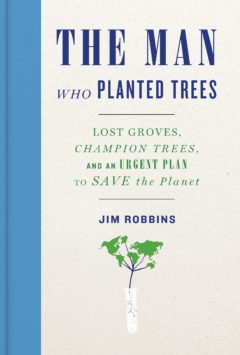The Man Who Planted Trees

by Jim Robbins
“When the Europeans landed, the forests were so thick that it’s often been said that a squirrel could travel from the Atlantic coast to the Mississippi River without touching the ground. Squirrels can’t make that journey anymore,” writes Jim Robbins in The Man Who Planted Trees.
Robbins, a New York Times science writer, thought that planting trees was a “feeble response” to the planet’s ecological crisis; that was before he met David Milarch, the charismatic and quirky tree farmer from a small Michigan town who was on a mission to save the DNA of the planet’s champion trees.
Robbins’s book is as much an adventure tale as it is a character study of a conflicted, unlikely visionary and a carefully researched report on the newly discovered ways that healthy trees and forests are essential to life on our planet. Scientists now know that trees play a role in our own health and emotional well-being: studies have shown that being among trees, even merely having a view of them, reduces our anxiety and depression, enhances the healing process, and stimulates our immune system.
There is so much more to learn, and we are running out of time. In the face of climate change, Milarch believes that cloning the few remaining ancient trees that have thrived despite the challenges to their existence may be key to the survival of the forests.
Reading the story of his passionate, visionary quest, you might agree with what Robbins came to believe: that “planting trees may be the single most important ecotechnology that we have to put the broken pieces of our planet back together.”






